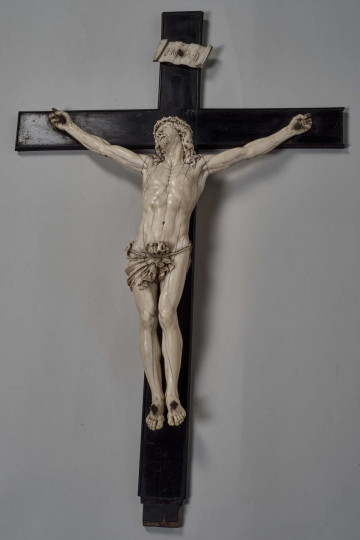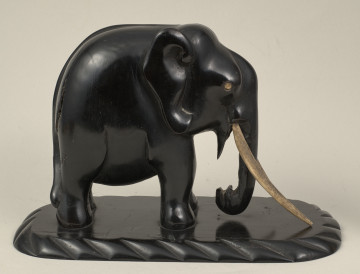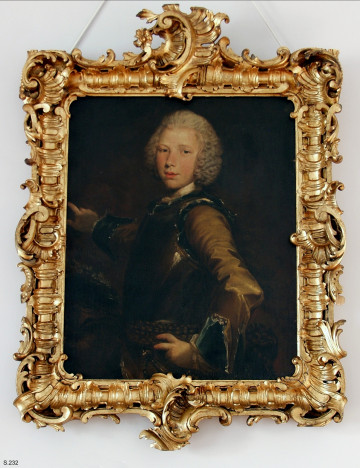
Crucifix
18th century
Castle Museum in Łańcut
Part of the collection: Rzeźby
A figurine of an elephant made of ebony wood and animal bone, dating back to the nineteenth century. Due to the origin of the materials used and the subject matter, it can be assumed that the sculpture comes from the Far East (probably China). The symbol of the elephant can be read in many ways - in Chinese, the word "xiang" means "elephant" and "luck". This exotic animal was a valuable trophy due to its rarity and price, not only for hunters of the time, but also for collectors of souvenirs – hence the popularity of elephant figurines in European collections. Even Marco Polo came into contact with elephants, and in his report, he mentioned the ruler of the Mongols traveling in a wooden chamber installed on four elephants.
Elephant tusks made of animal bone have not been preserved in the described exhibit. It is worth paying attention to the twin object with the number S.5769MŁ, depicting an elephant with preserved tusks. The object is exhibited in the Ordynat's's Office.
Michał Rajchert
Author / creator
Object type
rzeźba
Technique
rzeźbiarskie
Material
Heban wood, bone
Creation time / dating
Owner
Muzeum - Zamek w Łańcucie
Identification number
Location / status

18th century
Castle Museum in Łańcut

XIX century
Castle Museum in Łańcut

1. połowa XVIII wieku
Castle Museum in Łańcut
DISCOVER this TOPIC
National Museum in Lublin
DISCOVER this PATH
Educational path